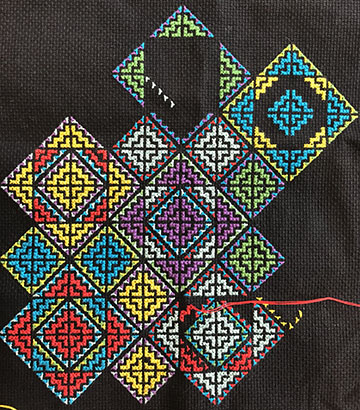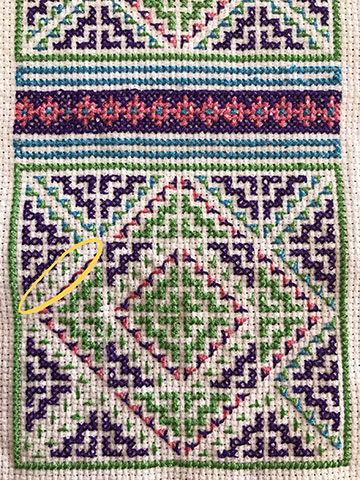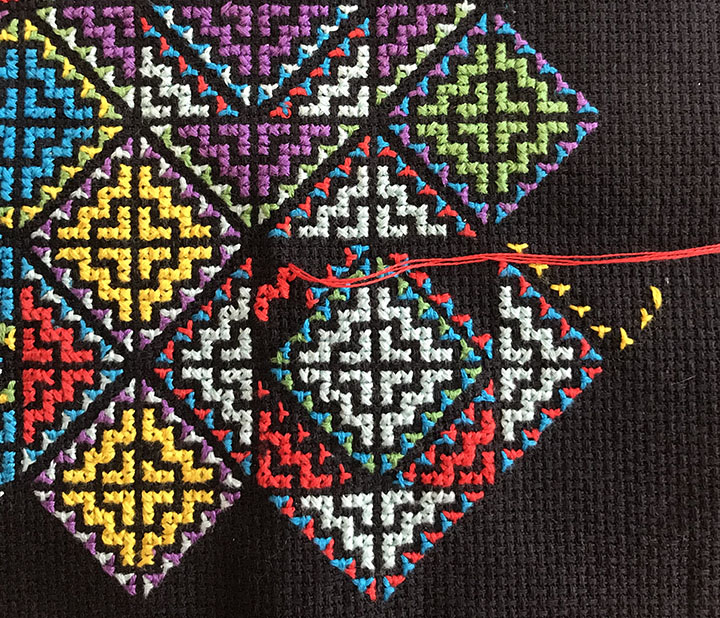In cross-stitching examples, Mai Nou used an Aida style fabric, which is an open and even weave cotton fabric specific for cross-stitching. This cloth is often white in color, but can be found in various colors. Aida cloths are mesh and stiff, which allows for you to not have to use a hoop to hold the material taut. To develop geometric visualizations, an Aida fabric allows for the output of straight lines and shapes through counting. In Mai Nou’s cross-stitching, there is a strict pattern, or script, to follow (see Figure 1). When there is a misstep, the medium allows you to participate in undoing your mistake. What’s materialized in the end speaks to the traditional Hmong patterns that communicated information about clan affiliations, genealogies, geographies, wealth, and sometimes with some recognition of plants and animals—and it also speaks to how the fibrous media have been manipulated. For example, you can see this in the stretching of the fabric as a result of tension.



